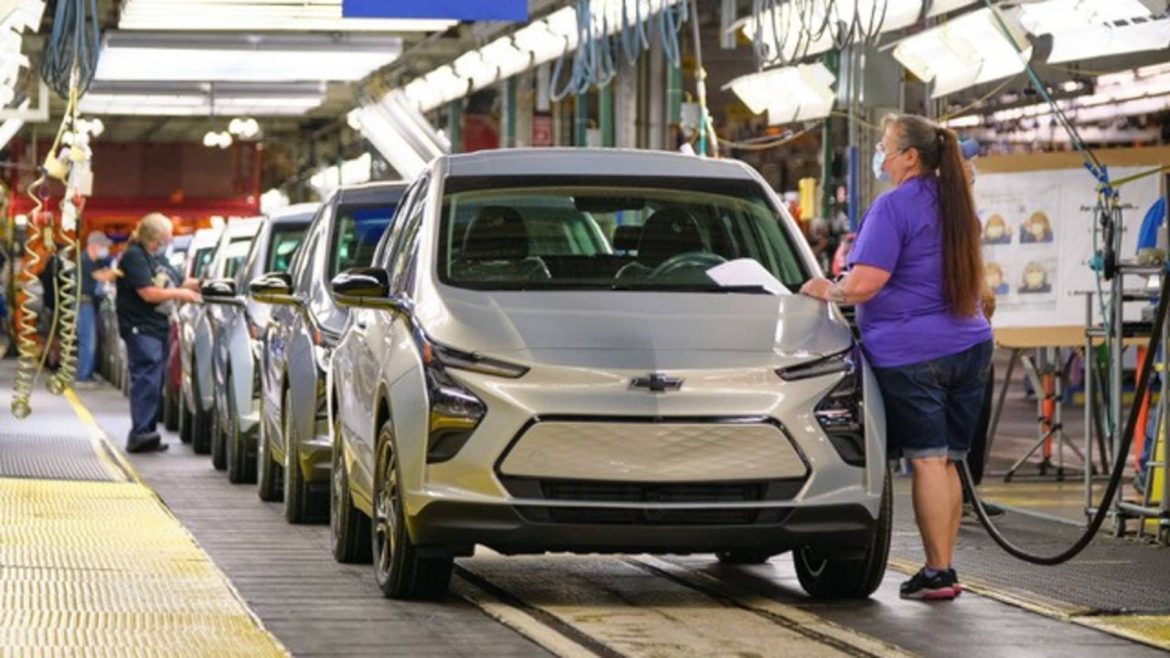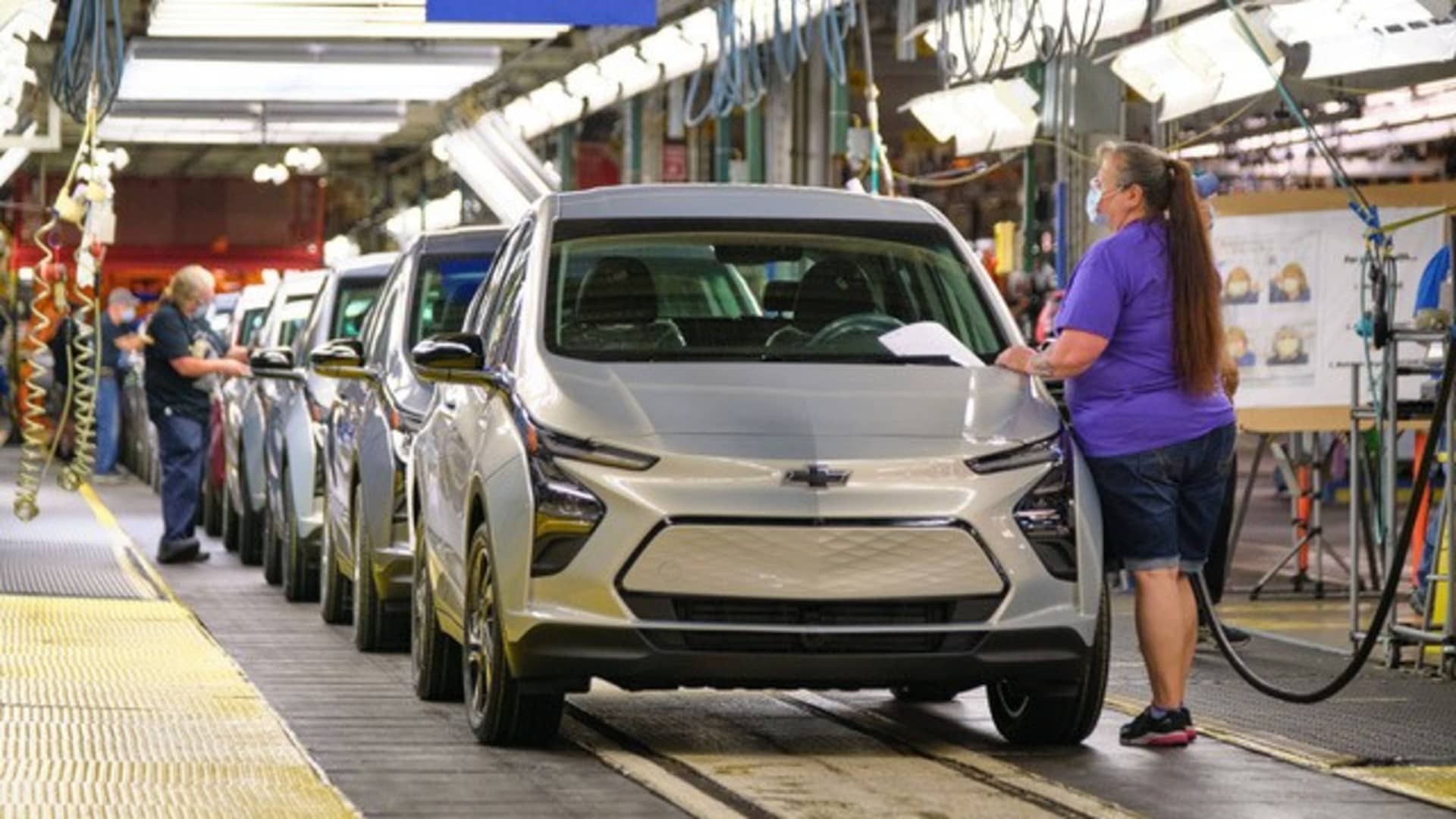The Tariff Tightrope: GM’s $4 Billion Investment Amidst Costly Trade Winds
The year is 2025, and the automotive industry is navigating a complex landscape shaped by tariffs imposed by the Trump administration. General Motors (GM), a bellwether of the American economy, finds itself at a critical juncture. While facing a potential $4 billion to $5 billion hit to its profits due to these tariffs, GM is simultaneously embarking on a significant $4 billion investment in U.S. manufacturing plants. This strategic maneuver reveals a company attempting to mitigate the negative impacts of tariffs while capitalizing on the potential benefits of increased domestic production.
The Tariff Threat: A $4 Billion to $5 Billion Gut Punch
The imposition of tariffs on imported cars and auto parts has cast a long shadow over GM’s financial outlook. The company has publicly stated that these tariffs could reduce its full-year profit by a substantial $4 billion to $5 billion. This stark warning sent ripples through the industry, highlighting the potential consequences of protectionist trade policies on global corporations.
The impact stems from various sources. Tariffs on vehicles imported from countries like Korea, Mexico, and Canada directly increase the cost of goods sold. This is particularly relevant for GM, which, despite being an American company, relies on a global supply chain and imports certain vehicle models and components. The tariffs essentially penalize GM for its international operations, forcing it to either absorb the increased costs, pass them on to consumers (potentially reducing demand), or restructure its supply chain.
Furthermore, the tariffs have created uncertainty in the market, leading to potential disruptions in production and sales. Ford, for example, suspended its annual guidance due to the uncertainty surrounding Trump’s tariffs, estimating a $1.5 billion hit. This climate of unpredictability makes it challenging for automakers to plan for the future and invest in long-term growth. The tariffs also impacted other areas such as “cost pressures and lower full-size pickup wholesales due to planned downtime for plant upgrades”.
The $4 Billion Countermove: Investing in American Manufacturing
In response to the challenges posed by tariffs, GM is doubling down on its commitment to U.S. manufacturing. The company plans to invest $4 billion in several American plants, signaling a strategic shift towards increased domestic production. This investment serves multiple purposes.
Firstly, it mitigates the negative impact of tariffs by reducing GM’s reliance on imported vehicles and parts. By producing more vehicles in the U.S., the company can avoid the tariffs imposed on imports, thereby lowering its overall costs. Secondly, it allows GM to capitalize on the potential benefits of increased domestic production, such as job creation and positive public relations. President Trump has actively encouraged companies to invest in U.S. manufacturing, and GM’s investment aligns with this agenda.
Specifically, GM’s investment will focus on expanding finished vehicle production of several of its most popular vehicles. Two popular Chevrolet vehicles currently built in Mexico will have their production moved to the U.S. GM is investing in plants in Michigan, Kansas, and Tennessee. The manufacturing investment will boost output of electric and gas-powered vehicles. The company is adding workers to its Fort Wayne, Indiana, plant to increase production of its light-duty trucks in the U.S.
This strategic investment in American manufacturing allows GM to navigate the complexities of the tariff landscape while bolstering its presence in the U.S. market. “GM CEO Says Automaker Will Boost Production in U.S. After Tariff Hit.”
A Two-Pronged Strategy: Navigating the New Reality
GM’s response to the tariff situation reveals a two-pronged strategy: damage control and opportunity maximization. By acknowledging the potential $4 billion to $5 billion profit reduction, GM is managing expectations and preparing investors for the financial impact of the tariffs. Simultaneously, the $4 billion investment in U.S. manufacturing signals a proactive approach to mitigate the negative effects of tariffs and seize new opportunities.
This strategy also reflects the complex realities of global trade in the 21st century. Companies like GM operate in a globalized marketplace, with intricate supply chains and international production networks. Tariffs disrupt these established systems, forcing companies to adapt and innovate. GM’s response demonstrates its ability to navigate these challenges and position itself for long-term success.
Beyond GM: A Broader Impact on the Automotive Industry & Beyond
GM’s experience with tariffs is not isolated. Other automakers, such as Ford, have also felt the sting of increased costs and uncertainty. More broadly, the tariffs have sparked a debate about the merits of protectionist trade policies and their impact on the U.S. economy.
While some argue that tariffs protect American jobs and industries, others contend that they raise prices for consumers, harm businesses, and disrupt global trade. The economic impact of tariffs is a complex and multifaceted issue, with no easy answers.
President Trump’s administration has pointed to a long list of companies announcing plans to build factories in the U.S. as evidence of its success. Still, there are impacts to areas such as “vehicles imported from Korea, Mexico, and Canada”. “Long gone are the days when an imported car meant a foreign car. And no company proves the point more than General Motors Co.”
Finding the Balance: Navigating the Tariff Maze
GM’s journey through the tariff maze offers valuable lessons for other companies operating in a globalized world. The key is to adopt a flexible and adaptable strategy that balances short-term challenges with long-term goals. This involves carefully assessing the impact of tariffs on the company’s operations, identifying opportunities to mitigate the negative effects, and investing in strategies that promote sustainable growth.
For GM, this means investing in U.S. manufacturing, streamlining its supply chain, and developing innovative technologies that reduce its reliance on imported components. It also means engaging with policymakers to advocate for trade policies that support a level playing field for American businesses.
Conclusion: A Glimpse into the Future of Automotive Manufacturing
The story of GM’s response to Trump’s tariffs is a microcosm of the challenges and opportunities facing the automotive industry in the 21st century. As global trade patterns shift and new technologies emerge, automakers must navigate a complex landscape to remain competitive. GM’s experience highlights the importance of adaptability, innovation, and a strategic vision for the future. The road ahead will undoubtedly be bumpy, but with a clear sense of direction and a commitment to excellence, GM and other automakers can steer themselves towards success.





